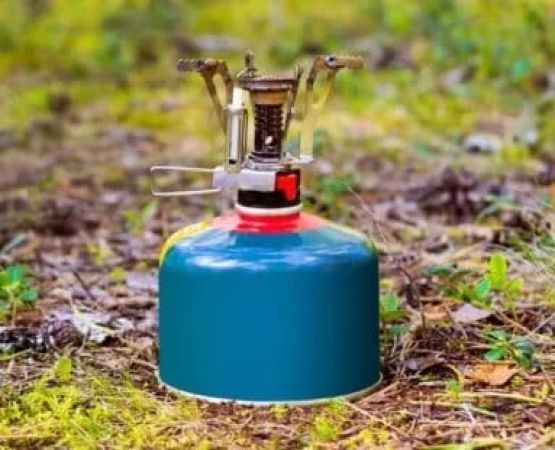How to Prepare for a Remote Camping Trip: Expert Tips for a Successful Adventure
- The Basics of Remote Camping
- Choosing the Right Gear for Remote Camping
- How to Plan for Safety on a Remote Camping Trip
- Setting Up Camp in the Wilderness
- How to Leave No Trace and Protect the Environment
The Basics of Remote Camping
Remote camping offers an incredible opportunity to disconnect from the hustle and bustle of daily life and immerse yourself in nature. However, preparing for such an adventure requires careful planning and consideration. The first step in preparing for a remote camping trip is to choose the right destination. Remote camping locations are often found in national parks, wilderness areas, or off-the-beaten-path camping grounds.
Make sure to research the area thoroughly, including terrain, weather conditions, and potential hazards. A remote camping trip can mean minimal access to resources, so knowing what to expect will help you prepare accordingly. Make a checklist of essential items to bring, ensuring that you have enough supplies for the duration of the trip.
Choosing the Right Gear for Remote Camping
When preparing for a remote camping trip, packing the right gear is crucial for your comfort and safety. Since these trips often take you away from civilization, it’s essential to bring everything you need to survive and thrive in the wilderness. Here’s a breakdown of must-have gear for a remote camping adventure:
- High-quality tent: Choose a durable, weather-resistant tent that can handle the elements, whether it’s rain, wind, or intense sunlight. A four-season tent is ideal for extreme conditions.
- Sleeping bag and mat: Ensure your sleeping bag is rated for the expected temperatures. A comfortable sleeping mat will provide insulation from the cold ground.
- Cooking equipment: A portable stove, fuel, and lightweight cookware are essential. Pack freeze-dried meals or simple, easy-to-cook options that require minimal preparation.
- Water purification system: Carry a reliable water filtration system, such as a pump filter or iodine tablets, to ensure you have access to clean water throughout your trip.
- First-aid kit: A well-stocked first-aid kit, including bandages, antiseptic, and any personal medications, is a must-have when venturing into the wilderness.
Consider the weight and size of your gear, as remote camping often involves hiking long distances to your campsite. Opt for lightweight, compact items to minimize the load.
How to Plan for Safety on a Remote Camping Trip
Safety is one of the most important factors when preparing for a remote camping trip. Being far from help means you must take proactive steps to ensure your well-being. Here are some safety tips to keep in mind:
- Tell someone your itinerary: Always share your travel plans with a friend or family member before heading out. Include your intended route, expected arrival time, and return date. This is vital in case of an emergency.
- Weather monitoring: Stay updated on weather forecasts before and during your trip. Severe weather can be dangerous, and knowing the forecast will help you prepare accordingly.
- Know how to navigate: Remote camping areas may not have clear signage, so it’s essential to have a map, compass, or GPS device to avoid getting lost.
- Wildlife awareness: Research the wildlife in the area and know how to avoid encounters. Carry bear spray if needed and store food securely away from your campsite.
By preparing ahead of time and practicing caution, you can enjoy your remote camping adventure with peace of mind.
Setting Up Camp in the Wilderness
Once you arrive at your campsite, setting up camp efficiently and safely is crucial. Here’s a quick guide to getting your campsite ready for a comfortable stay:
- Choosing the right site: Find a flat, dry area to set up your tent. Avoid setting up near water sources, as they may flood during heavy rain. Look for a sheltered area to protect your tent from wind.
- Setting up the tent: Set up your tent quickly and securely, ensuring that all stakes are properly anchored. If it’s windy, consider using guy lines to add extra stability.
- Building a campfire: If campfires are allowed, choose a safe spot away from tents and trees. Always ensure the fire is completely extinguished before leaving the area.
By organizing your campsite efficiently, you’ll be able to focus on enjoying your time in the wilderness.
How to Leave No Trace and Protect the Environment
As responsible campers, it’s important to leave the wilderness as you found it. Remote camping trips can impact the environment if proper precautions are not taken. Here’s how to minimize your footprint:
- Pack out everything: Don’t leave any trash behind. Bring trash bags to collect all waste, including food scraps and toilet paper.
- Respect wildlife: Keep a safe distance from animals and avoid feeding them. This helps maintain their natural behaviors and prevents them from becoming reliant on humans.
- Stay on trails: Stick to marked trails and avoid creating new paths. This helps protect the natural landscape and prevents erosion.
- Use biodegradable products: Choose eco-friendly soap and shampoo that won’t harm the environment.
By practicing the Leave No Trace principles, you’ll help preserve the beauty of nature for future generations of campers to enjoy.
Ready to embark on your remote camping adventure? Visit Pine Cliff Resort to book your next outdoor getaway and discover the joys of camping in the wild!







